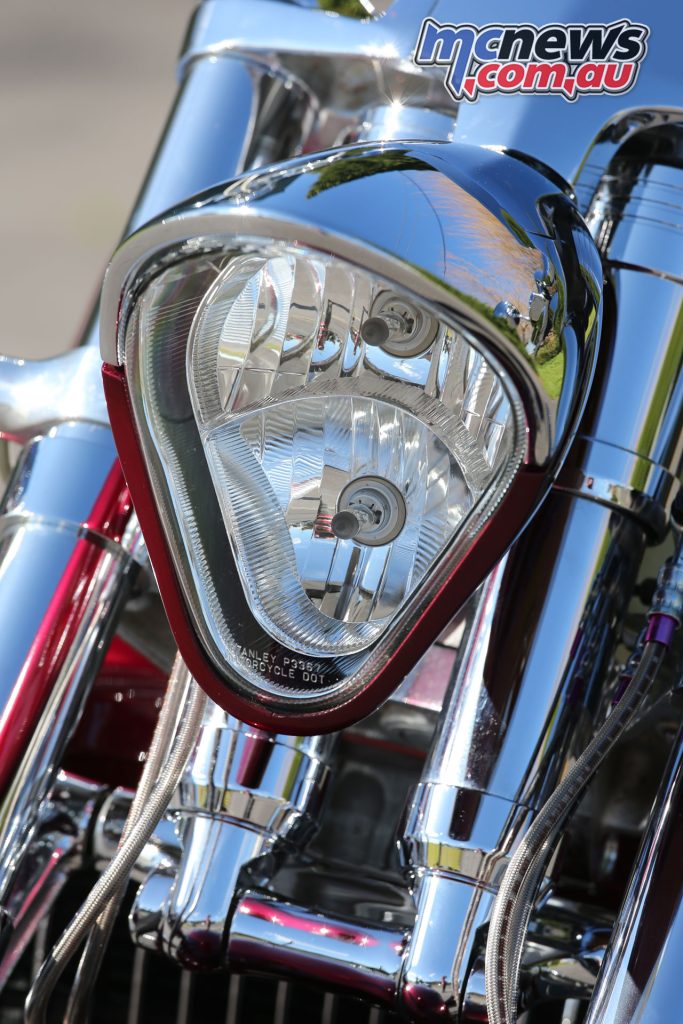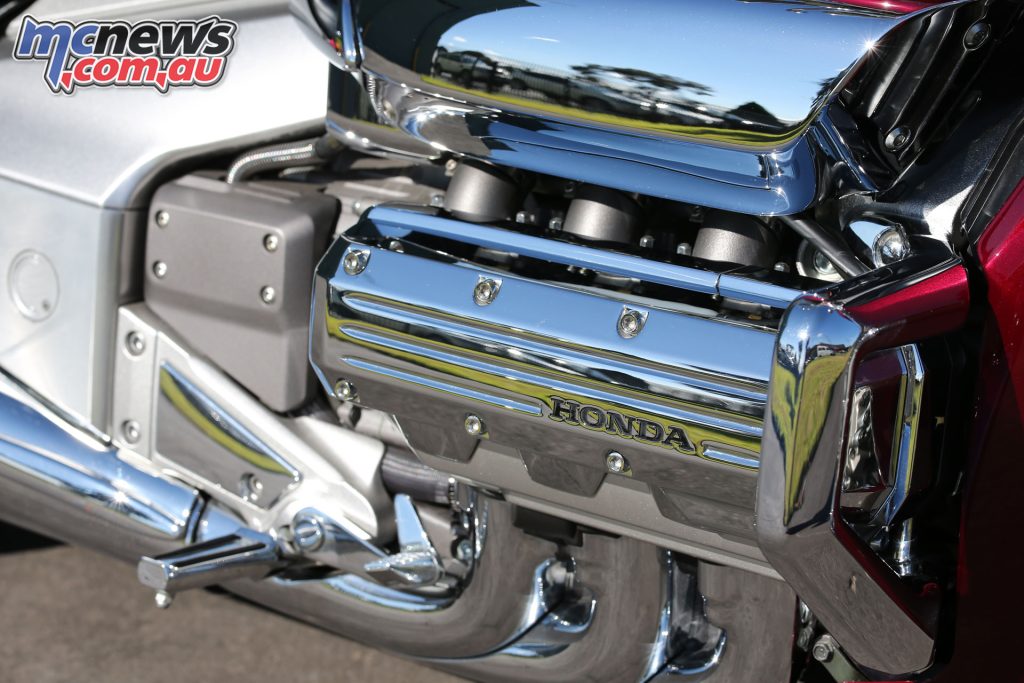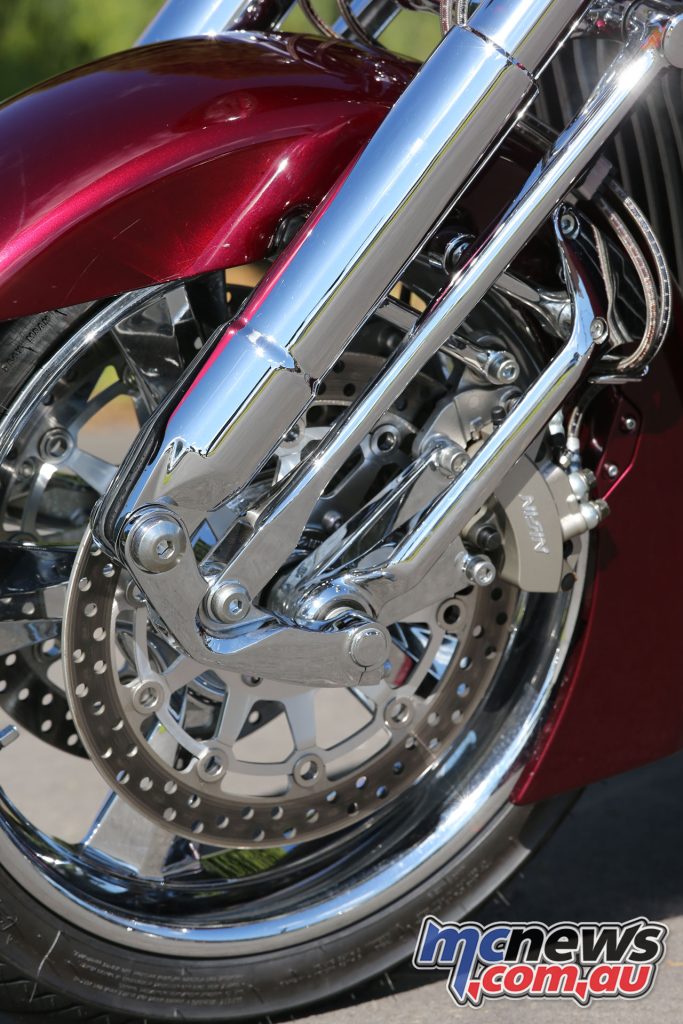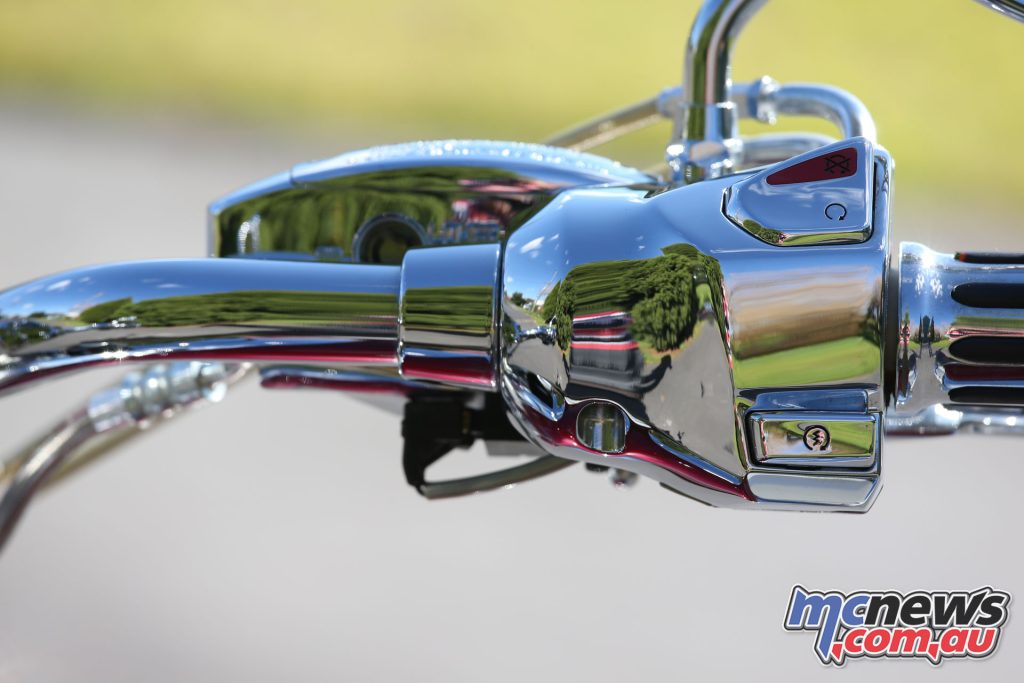Honda Valkyrie Rune
With Ian Falloon
Of all the Japanese motorcycle companies Honda has always had more resources and initiative when it came to testing the boundaries for expensive limited production models. One of the most astounding was the oval piston NR750 of 1992, and another was the amazing Valkyrie Rune more than a decade later.
The Rune grew out of the Honda Japan-designed Zodiac concept bike, shown at the 1995 Tokyo show. The Zodiac was a V-Twin and the immediate problem was that any V-Twin cruiser, no matter how good, always runs into is the accusation that it is trying to be a Harley.

But the Zodiac was radically styled, with striking trailing link forks and Honda Research America was inspired to create a special custom cruiser. Their ace was not to use a V-twin, but base the bike on the Gold Wing and Valkyrie flat six.
The Rune proved to be a challenge for the Honda engineers who had to make a functioning bike from a styling concept. The Rune (meaning “mystery” or “secret” in ancient Anglo-Saxon) was coded the NRX1800 and grew out of four concept models overseen by American Honda motorcycle design chief Martin Manchester.
The T1 (Valkyrie hotrod) was shown at the 2000 Cycle World Long Beach Show, followed by the T2 (retro custom), T3 (street dragster), and later T4. The T2 became the basis for the production Rune that appeared for 2004.

Powered by the single overhead camshaft 1832 cc Gold Wing engine, but with six 32mm throttle bodies instead of two, new cams and a re-mapped ignition, the Rune produced 118 horsepower and an eye-popping 123 lb-ft of torque.
The Rune had a Gold Wing powerplant with attitude and provided serious performance. Although most wouldn’t be ridden far, the Rune was also designed for long service intervals; 50,000 km for the first valve adjustment. A hydraulic clutch, chain-driven camshafts and shaft drive all reduced servicing time.
The chassis incorporated a number of distinctive features. The Zodia concept bike of 1995 inspired the unusual trailing link front fork, with twin upper shocks actuated by pushrods and links.
This gave the illusion of a raked chopper-style front suspension while maintaining conventional steering geometry. The fork was a mass of expensive forgings, bushes and dampers.

The Pro-Link rear suspension included a single-sided swingarm and single shock absorber, the lay-down shock’s upper mount contained within the swingarm rather than the chassis, in a manner similar to the RC211V MotoGP racer.
The wire-spoked wheels (with optional chrome) were 18 and 17 inches, and the triple disc braking system included the Combined Braking System of the VTX1800. And clever engineering saw the 330 mm discs fitted with three-piston calipers and a firm two fingers all that was required to stop the behemoth.
Even the chromed radiator, harking back to 1932 Fords, was designed to complement the styling, but had to please the engineers. The designers found a radiator that looked right and fitted the space, but the engineers found that radiator moved about 20% of the BTUs they needed it to handle.

The engineers wanted a larger radiator but as the shapes and part placement were critical they had to create a more efficient radiator with compound curves that pleased the designers and met Honda’s tough standards for cooling. That scenario was repeated for almost every part of the motorcycle.
In virtually every case, the designers got their way and the engineers came up with technology to satisfy the vision and Honda’s technical and functional requirements.
The frame was an aluminium beam type, and everything was finished to an impeccable standard. From the 1750 mm wheelbase to the 350 kg dry weight, the Rune was a large scale motorcycle. Although the ride was surprisingly good for such a large machine, the Rune’s primary appeal was its appearance.

Here was a custom motorcycle with the fit and finish of a quality production machine. The finish was simply stunning. There are very few custom bike builders anywhere in the world who can even match, let alone surpass, the quality of the chrome and paintwork on the Rune.
It’s amazing that a huge company like Honda ever took the Rune past the concept-vehicle stage, that it took the time (six years) and effort to build a limited-production piece of rolling art.
It’s also remarkable that Honda let its designers stray this far out of their usual boxes, and that the designers could spread their wings and fly so perfectly when they were released from those boxes.

In terms of a production motorcycle, it was in a class of its own. The Rune was a very special motorcycle and deserves to be appreciated for what it is: a true technical masterpiece and a great credit to Honda’s engineering ability – not to say their willingness to lose money on a prestige project.
Under Large Project Leader Masanori Aoki, the Rune was envisaged as an expensive ($24,490) limited production piece of rolling art. Production was to be around 1200 bikes in total, one for each US Honda dealer.
Each Rune left the American Honda Plant at Marysville, Ohio, costing the company a reported $100,000 – and sold for just a quarter of that price.

Honda Rune Specifications
| Honda Rune Specifications | |
| Engine | Liquid cooled, four stroke, opposed boxer six cylinders, SOHC, 2-valve per cylinder |
| Capacity | 1832 cc |
| Bore x Stroke | 74 x 71 mm |
| Compression Ratio | 9.8:1 |
| Induction | PGM-FI |
| Ignition | Computer controlled digital |
| Starting | Electric |
| Max Power | 86 kW /118 hp @ 5500 rpm |
| Max Torque | 167 Nm / 120.9 lb-ft @ 4000 rpm |
| Clutch | Hydraulic, wet, multiplate with coil springs |
| Transmission | Five-speed |
| Final Drive | Shaft |
| Front Suspension | Trailing bottom link fork non-adjustable, 100 mm travel |
| Rear Suspension | Pro-link single shock non-adjustable, 100 mm travel |
| Front Brakes | Dualwe 330mm full-floating discs three-piston calipers |
| Rear Brakes | Single 336 mm disc two-piston caliper |
| Tyres | 150/60 R18 (F), 180/55 R17 (R) |
| Wheelbase | 1750 mm |
| Seat Height | 691 mm |
| Dry Weight | 367 kg |
| Fuel Capacity | 23.5 L |
| Top Speed | 198 km |























